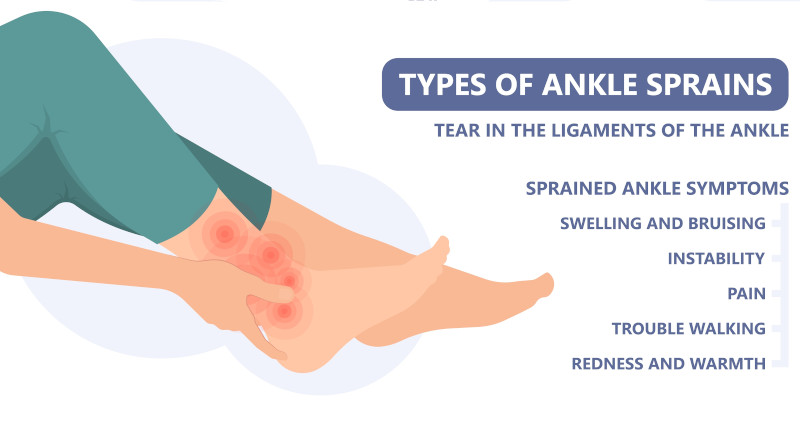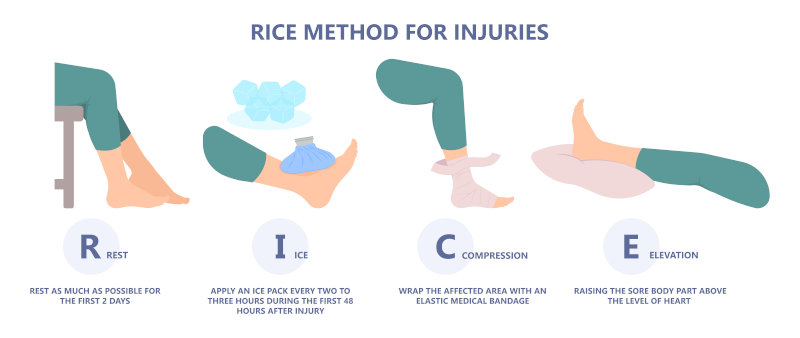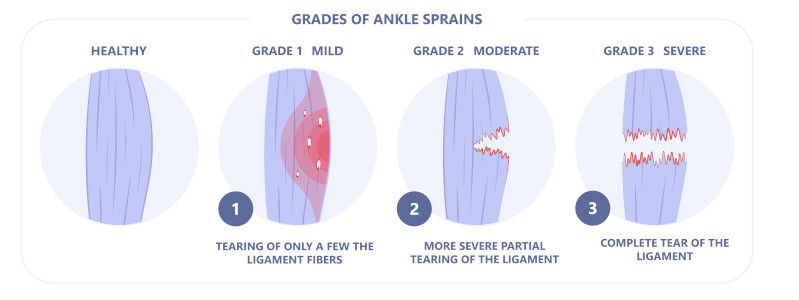
Struggling with an injured ankle? These injuries are exceptionally common, especially for athletes. However, anyone can sprain an ankle. It’s not just sports stars who need to worry about it. Thankfully, healing after such an injury is possible with the right sprain ankle treatment.
What Is an Ankle Sprain?
A sprained ankle can happen anytime you roll, turn, or twist your ankle improperly. The motion can stretch the ligaments that hold your ankle bones together, or it can tear them. In most cases, a sprain will injure the ankle ligaments on the outside and it can feel a lot like a broken bone. Thankfully, sprains can be treated at home.
Symptoms of a Sprained Ankle
If you’ve sprained your ankle, you’ll notice one or more of the following symptoms:
- Pain in the ankle
- Swelling
- Bruising
- Tenderness if you touch the injured area
- A popping sound/feeling when you were injured
- Instability within the ankle
- Reduced range of motion

What Causes a Sprained Ankle?
Ankle sprains are among the most common injuries podiatrists treat. Some of the most common causes include the following:
- Walking on an uneven surface
- Exercising on an uneven surface
- A fall that twists your ankle
- Jumping or pivoting and then landing awkwardly
- A collision with another person during sports
Do You Need to See a Doctor?
Ankle sprains can feel very serious, but they usually heal on their own with the right at-home care. Most people do not need to see a podiatrist. The trick is to give your ankle the right care to reduce swelling. The American Academy of Orthopedic Surgeons recommends the RICE treatment method:
- Rest – First, stop your activity. Take some downtime and get off the ankle. Try to avoid putting any weight on the ankle until it has begun to heal.
- Ice – Next, use an ice pack on your ankle to help reduce swelling and pain. You should leave the ice pack on for no more than 20 minutes. Repeat the process every two to three hours.
- Compression – Compression can help reduce swelling and provide the support your ankle needs. An elastic bandage wrapped around the ankle will help ease symptoms and speed healing.
- Elevation – Keep your ankle elevated as much as possible. Lie down on a couch or a bed and put a pillow or two underneath the ankle to help with the pain and swelling.
 Use over-the-counter pain medication like ibuprofen and acetaminophen to help with pain and swelling.
Use over-the-counter pain medication like ibuprofen and acetaminophen to help with pain and swelling.
If You Decide to See a podiatrist
If your symptoms do not improve within a few days using the RICE method, it’s time to see a podiatrist or physical therapist. The doctor will use several different diagnostic methods to determine if you have a sprained ankle, a broken bone, or another injury.
Physical Inspection FOR A SPRAIN ANKLE TREATMENT
First, the doctor will conduct a visual and physical inspection of your ankle. The doctor will compare the injured ankle to the other one to determine if it is swollen and bruised.
Next, the doctor will conduct what’s called a palpitation test. This just determines the extent of the tenderness around the injury. The doctor will gently press around the ankle and identify the injured tendons.
It’s also important to determine how much you can move the ankle. The doctor will conduct a range of motion test by pulling your ankle in different directions to see where it’s most painful.
Finally, your doctor will gently pull your ankle in different directions to measure its stability.
Depending on the results of the physical inspection, your doctor may decide that imaging tests are necessary. This is usually done to make sure that the damage is only to the soft tissues of the ligaments and that you don’t have a broken bone. Several different imaging tests can be used, including the following:
- X-rays – The most common type of imaging test is the X-ray. These tests allow your doctor to see the bone structure within your ankle and determine if there is any damage. This is particularly common if you have a severe sprain, which can have similar pain to a broken bone.
- MRI – Another type of imaging that your doctor might use is magnetic resonance imaging, or MRI. This type of scan is done to evaluate tendons and cartilage around the injury site, and if you are showing signs of a high ankle sprain instead of a low one.
Your doctor will then be able to diagnose the type of sprain you have. Grade I sprains are painful, but you can usually walk. Grade II sprains are more painful and involve difficulty walking. Grade III sprains are extremely painful, and you probably cannot walk.
Healing from an Ankle Sprain
Ankle sprains are common, but they are also very painful and will require recovery, which will involve three distinct phases that help ensure that the ankle heals correctly.
- Phase 1 – During this phase, you’ll rest the ankle and avoid putting weight on it. Ice and medications will be used for pain and swelling.
- Phase 2 – The next phase focuses on restoring strength, flexibility, and range of motion to your injured ankle.
- Phase 3 – The final phase focuses on getting you back to straight-ahead activity, as well as maintenance exercises to continue healing your damaged ankle.
You must complete your rehabilitation program. It’s designed to strengthen your muscles and improve the flexibility of your ligaments, reducing the chance that you’ll sprain your ankle again.
The Takeaway
Ankle sprains are very common injuries. They don’t happen only to athletes either. Just stepping off the sidewalk incorrectly can sprain your ankle. In many cases, treatment with the RICE method will be enough to get you back up and going, but if your symptoms do not abate within a couple of days, having your injury diagnosed by a doctor is important. Your doctor will prescribe a sprain ankle treatment that includes rest, exercise, and motions that build flexibility to help you heal faster and completely.

